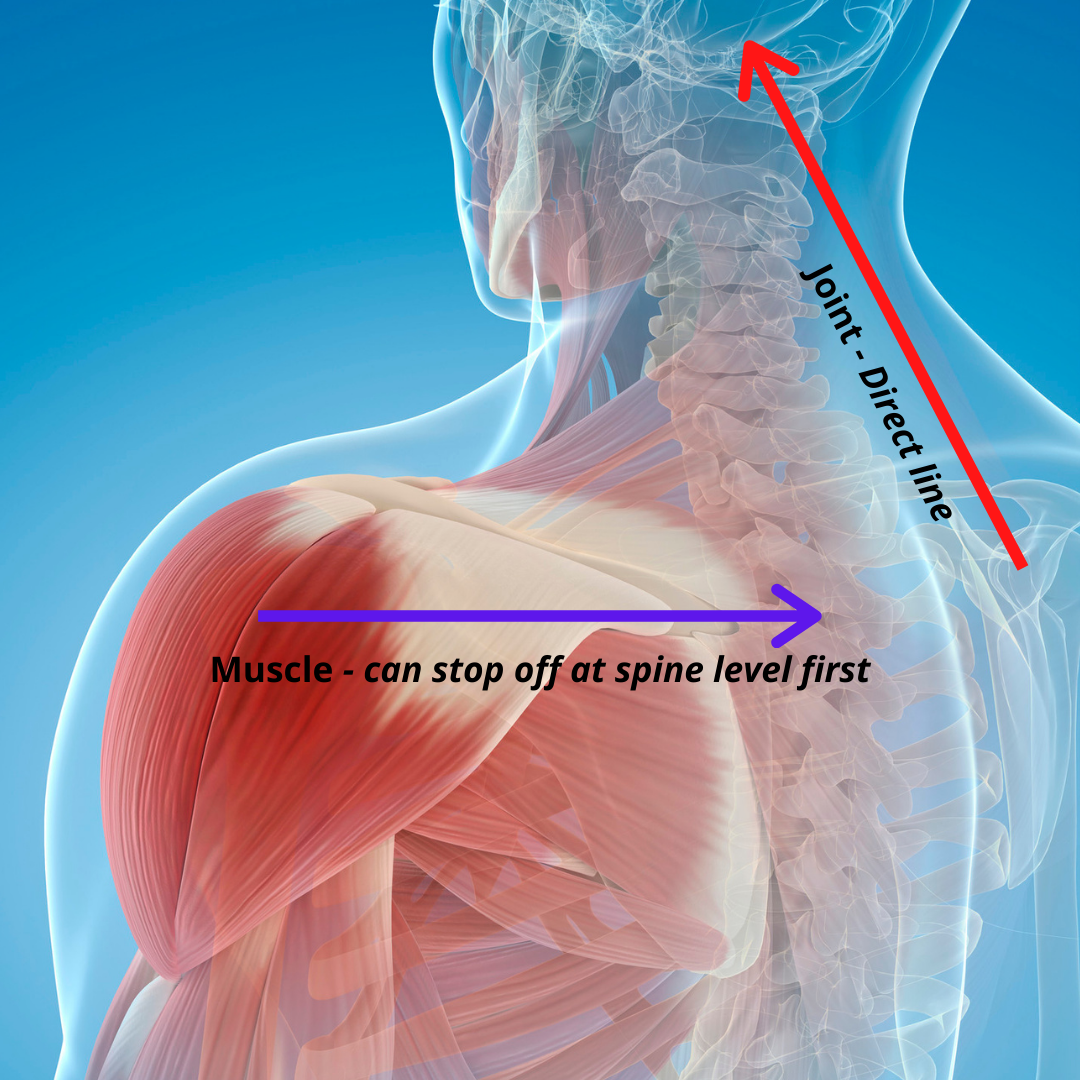Should Joint Capsule Work Come First?
Capsule work can often be a missing piece when dealing with chronic issues, recovery, or set backs.
What is a joint capsule?
Joint capsules are essentially a sleeve that covers every intersection of one bone to another bone that provides movement in your body. Joint capsules are found throughout your body, including your knee, hip, elbow, shoulder, toes, fingers, and more. These joint capsules are an enclosed space that dictate how much motion the joint is allowed to have.
Each joint capsule has a different capacity or range based on the movement it was designed to execute. For you to have a useable joint capsule, the two bones enclosed in the joint capsule must move relative to each other.
JOINT CAPSULE
How does your capsule get information?
Imbedded in your joint capsules are various receptors. These receptors pick up any change in conditions that occur within the capsule such as stretching, shortening, pain, direction, etc. After these receptors pick up that information they send it to your brain to be processed. The brain has to decide how to proceed given the input it is receiving. Once the brain determines the best course of action, it sends a signal back down to the joint to then be carried out by the joint capsule connective tissue (dense fibrous tissue that supports, protects, and gives structure to the joint). Most of the time this signal tells us to proceed as normal since it’s most likely a movement we have done thousands of times before (brushing your teeth, sitting down, reaching for the remote). However, sometimes if it’s a movement pattern that causes us pain, the brain will send a signal that tells various soft tissues to tighten up. This is how your brain protects you from further injury. For example, if a recent injury has damaged the joint connective tissue, then your brain deems the movement to be unsafe and tightens the surrounding tissue to prevent further motion. Interestingly, this can also occur if the joint doesn’t possess the active range of motion to execute a certain movement.
Muscle tissue may make a pit stop at the spine level first whereas the capsule can have a direct line to the brain.
Why the capsule may need work prior to other exercises
While the receptors in both muscles and joints may eventually go to the same place (the brain) your muscles make a quick pit stop in your spine to decide if the information can be fixed by a simple reflex, or if it needs to go to the brain for further analysis. This is obviously not a long delay but it makes a difference when assessing where pain or limitation may be stemming from. Importantly, the only tissue receptors that get a direct line to your brain are the ones in your joint capsules. Research tells us that any signal the joint capsule receives will not only have a direct line, but it will also be received before the muscles receive any input. This essentially means that when you move your arm to pick something up off the counter your brain is aware of the movement in your shoulder joint before it is aware of the muscles involved that help move the arm forward. Therefore, building a comprehensive training regimen first requires careful consideration of joint limitations and range of motion to improve your overall health and well-being.
What happens when we treat the muscles before the joint capsule?
This isn’t always a bad thing, and much benefit can be gained from manual work on soft tissues that are not capsular. However, sometimes this may be “putting the cart before the horse” so to speak, as the truth is, it depends.
Not all pain, limitations, or injuries are originating from the joint capsule. However, joint capsules are prone to repetitive injuries that happen over a period of time. These types of injuries result in tendinitis, bursitis, and many types of syndromes (carpal tunnel syndrome, patellofemoral syndrome, shoulder impingement syndrome, for example). There can be injuries to the joint capsule that are acute such as dislocations, ACL tears, whiplash of the cervical spine (neck), and many others. All these injuries may require some kind of strength program as well as muscle relaxing (stretching or massage therapy) to aid in the healing and recovery process. Problems arise when muscles will not stay relaxed or when a limit is reached with the amount of weight you can add to strengthen a muscle. Coincidentally this is where a lot of injuries can occur. Often, we assume that hitting a plateau in recovery means this injured area is as good as it’s going to get and will always have problems.
If we look closer at the capsule, we might find that we can break through the plateau and reach gains that we didn’t think possible after an injury. This requires conditioning the tissue that’s often left ignored.
Here is an example: you want to add chest presses into your workout routine but find your chest muscles feels uncomfortably tight during or after each workout. This tightness might be preventing you from increasing weight or perhaps it’s decreasing your range of motion while performing the chest press. You have tried stretching and foam rolling with no lasting relief from your chronic tightness. What joint does your chest muscle cross over? Your shoulder joint. It is quite possible that you aren’t getting long-term relief from tightness in your chest because of a disfunction at the shoulder joint capsule.
A telling sign of a disfunction in the joint capsule
One important way (as there are many) to tell if there is an issue in your joint capsule versus the muscle is feeling for closing angle pain.
Closing angle pain is typically felt as a pinching sensation when two bones or joints are coming together. This pain can also be an increased pressure sensation in the joint capsule that the individual would feel while moving their joint through active range of motion (see our previous article for details about active range of motion).
Closing angle pain can indicate that there is not enough space in the capsule for the two bones to move relative to each other.
Closing Angle vs Open Angle
Pictured: Closing angle side of shoulder
Try This:
Lift your arm straight forward and overhead (shoulder flexion) until it can’t go any further. The space that is under your arm is considered open angle while all the space on top of your arm is considered closing angle. For the sake of this example, we will consider any sensation felt on the opening side to be normal. If you feel a pinch, compression sensation, or pain, on the closing side of the arm that’s lifted, then it may indicate you have an aberrant joint. Further assessment to break down the shoulder capsule is necessary to determine exactly where in the joint the problem is located.
Take Home:
It is important to maintain a well-rounded workout regimen that incorporates joint specific training principles along with your muscle endurance and/or strength training. This doesn’t just apply to the gym or sport settings. Joint training means longevity and resiliency in your body to withstand all that life throws at you over the years. When considering your training or just how to better integrate self-care, consider looking at deeper layers rather than just the superficial.





